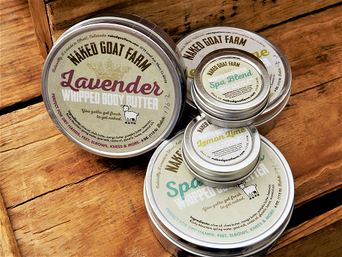What not to wear
Written By
24 Aug 2017

Do you know what you put on your skin everyday? Your skin is your body's largest organ and it absorbs up to 60% of everything it comes in contact with and absorbs it directly into the bloodstream, including all of the chemicals found in everyday personal beauty products. It is very important that you the consumer are aware of these chemicals and what they do. Here is a list of the most common harmful chemicals found in your everyday beauty products.
PHTHALATES/FRAGRANCE: Phthalates are estrogen-mimickers that wreak havoc on the endocrine system in the human body and cause unwelcome hormonal effects. They are found in fragrance and nail polish. In Europe three phthalates- DEHP, DBP and BBP- are banned for use in cosmetics and in all toys and childcare articles. Fragrance is unregulated and can indicate the presence of up to four thousand different ingredients, many of which can be toxic or carcinogenic. Clinical observation proves fragrances can affect the central nervous system, causing depression, hyperactivity and irritability. Forms of fragrance are in the majority of personal care products such as perfume, moisturizers, soap, shampoos and candles. Looks like this on a label: DEHP, DBP, BBP, DINP, DIDP, DNOP.
PROPYLENE GLYCOL: Is related to anti-freeze and is a derivative of petroleum. It is the second most common ingredient in moisturizers, aside from water. It's linked to liver abnormalities and kidney damage, and is also a skin and eye irritant. It is found in sunscreens, moisturizers, baby lotion, antiperspirants and deodorants and shaving products. Looks like this on a label: Propylene Glycol, Proptylene Glycol, 1,2-Propanediol. Related synthetics: PEG (polyethylene glycol) and PPG (polypropylene glycol).
FORMALDEHYDE: Often referred to as formalin, is used as a preservative and has been linked to cancer, developmental and reproductive problems and asthma. It is primarily used in nail polishes, shampoos and bleach. It has been banned in Japan and Sweden. Looks like this on a label: formaldehyde, formalin, formic aldehyde, oxomethane, oxymethylene.
HYDROQUINONE: Is used as an active ingredient in over-the-counter products such as skin lighteners, hair bleaches, concealers, facial cleansers and sunscreens with SPF 15 or higher. It is related to cancer, neurotoxicity, endocrine disruption and developmental and reproductive toxicity. Looks like this on a label: 1,4-Benzenediol, 1,4-Dihydroxybenzene, P-Dioxybenzene, 4-Hydroxyphenol, P-Hydroxyphenol,1,4Benzenediol.
PETROLATUM/PETROLEUM: Although difficult to spot because of its many aliases, it's most commonly known as petroleum jelly. It is a fossil fuel that is broken down into smaller components, which contain hydrocarbons, and is a common ingredient in beauty products. It can be found in moisturizers, conditioners, wax depilatories, baby creams and makeup. Petroleum derivatives have been linked to cancer, developmental and reproductive damage, immune system toxicity, endocrine disruption and neurotoxicity. It is banned in Europe. Looks like this on a label: petrolatum, petroleum jelly, trioxaundecanedioi acid, toluene, 4-amino-2-hydroxytuolene, BHA. MERCURY: Is a controversial ingredient that causes damage to the brain and is blamed for autism in children. It is most commonly found in eye products like mascara. Looks like this on a label: mercurous chloride, thimerosal.
MINERAL OIL - Is a petroleum derivative that has the same origins as fossil fuels. It's an ingredient in foundations, lipsticks, lotions and makeup removers. It has been linked to a variety of things, from clogged pores to cancer. It does not allow the skin to breathe. Looks like this on a label: liquidum paraffinum, paraffin oil, paraffin wax. LEAD: In 1978 it was banned from paint due to the dangers it causes to the body. It can affect almost every organ and system in the body. It can cause anemia, an increase in blood pressure and it can damage the brain and kidneys. Somehow traces of it can still be found in hair dye and red lipsticks. Although lead should be labeled in some form or fashion, it is not.
COLORANTS/SYNTHETIC COLORS:Used to create make-up shades and colors, these colorants are found in countless makeup and beauty products and are listed on labels as FD&C or D&C colors. Most colorants actually are regulated by the FDA, however, most are derived from coal tar, which has been linked to cause cancer. Looks like this on a label: D&C, FD&C.
SODIUM LAURYL SULFATE / SODIUM LAURETH SULFATE: Often found together in products acting as a foaming agent. It is a detergent which has been found to enter the brain, heart and liver and impairs the immune system. It also causes eye irritations and skin rashes. When mixed with other chemicals found in toiletries it can form carcinogenic (cancer-causing) compounds. It can be found in shampoos, conditioners, soaps and toothpastes. Looks like this on a label: Sodium Laureth Sulfate, Sodium Lauryl Sulfate, Sodium Lauryl Ether Sulfate, Anhydrous Sodium Lauryl Sulfate, Irium, SLS, SLES, MSDS, ALES, ALS.
Methychloroisothiazolinone/Methylisothiazolinone: The preservative was responsible for an epidemic of allergic reactions in the 80's and early 90's, now it is mainly used in rinse off products. Researchers have also found that it causes neurological damage. It could also put pregnant women's fetus at risk for abnormal brain development. Exposure to this chemical could also be a factor in the development of Alzheimer disease and other nervous system disorders. It is found in almost all shampoo and conditioners.
Read product labels around your home and do research about what you are using everyday. It is shocking what is used to make beauty products. Beauty products are not regulated by the FDA because they are not ingested.


